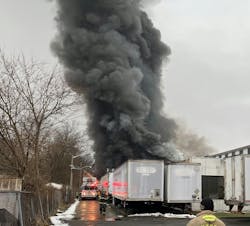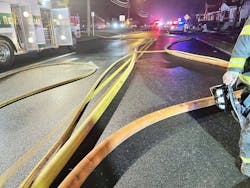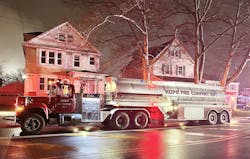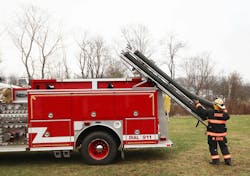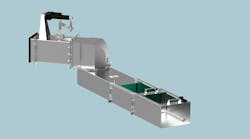Fire Studies: Water on the Fire … and Sustaining It
At the simplest point, the job of the fire department is primarily suppression. Yes, collectively, we provide a multitude of services, but suppression is the foundation of most departments’ mission. Firefighters are called on to perform myriad tasks on the fireground, and each of them are related directly to the success of an efficient suppression operation. However, notwithstanding the importance of coordinated efforts, the core capabilities of delivering water are where everything starts for us. The steps to deliver said water might vary between jurisdictions, but the result remains the same.
Aspects of suppression
When we talk about water, we must know how much. Seems simple: enough to put out the fire. It isn’t the intent of this column to discuss the finer points of said delivery on the fire (e.g., smooth bore/fog nozzle, direct/indirect/transitional attack), but the answer to “How much water for extinguishment?” is dependent on a few variables.
Construction/compartment. Does the building or compartment lend itself to influence fire behavior? Will the components of the “gravity resistive system” (a term from Ol’ Professor Frank Brannigan) add to the fire load and burn? Will the surface absorb/deflect/spread energy beyond the initial area?
Air track/flow path. Can ventilation be controlled and coordinated, or has the incident progressed beyond the capabilities of a coordinated attack?
Accessibility to the fire. Where is the location of the fire? Where is the water coming from? What’s needed to get the two of them to meet?
Resources. Alarm assignments, equipment capabilities, personnel, turnout time, hydranted vs. nonhydranted areas, etc.
Sustainability. Can you keep the rate of delivery consistent? If not, then what?
Supporting strategy & tactics
The needed water supply is conducive to the success of the size-up from the incident commander. What mode of operation is initiated on arrival?
Consider survivability. Do immediate capabilities match the support for rescue? Can you keep the firefighters safe while they perform the rescue?
Anticipate the arrival of the first-alarm companies and the amount of on-board water that immediately is available on scene. If we use the benchmark of 300 gpm for two handlines within
8–9 minutes on arrival, which quite often is used for standard response/fire behavior testing, how long can the first alarm support this flow? Additionally, will this flow/application make a significant dent in suppression? Perhaps the initial knockdown from tank water (application method) might be enough to reset the compartment, to support the rescue and to buy precious time to secure a continuous water source. Therefore, don’t discount the capabilities of initial-arriving water to be beneficial for the overall outcome for the incident.
Areas that are served by water distribution systems aid in providing available supply for apparatus on arrival. Flow testing is necessary to confirm that ample amounts of water are available for delivery, dependent on demographics and area. Departments should be out regularly to confirm available flow with local utility authorities that service the systems or should flow-test hydrants regularly by themselves.
Be forewarned: The presence of a fire hydrant doesn’t guarantee an acceptable amount of water when needed. Consider this example: For decades, determining flow rate has been taught to multiply the length of the building by the width of the building, then by the floors and the percentage of involvement. So, a single-story residential dwelling that measures 50 x 30 feet requires a 500-gpm flow rate, fully involved (not considering exposure protection). What about an estate home that measures more than 3,000 sq. ft.? The construction/size/fuel load of the compartment has changed but not the water distribution system that’s in the street. That said, tactics for decision-making must change, because the needs of the incident are determined by all of the factors of the incident, which, of course, includes compartment size.
Sustaining fire flow
Now that needed fire flow is determined, it must be sustained. Bringing large amounts of water to the scene requires resources that are assigned particularly for water supply. Having a plan for inclusion of water tender operations is a must, even if every street that’s in the response area has hydrants. The resources that deliver the water onto the fire need all of the water that’s available. Additionally, a reserve amount of water must be available in the event of an unforeseen emergency (hose failure/rupture, apparatus issue, etc.), which could be in the form of multiple drop tanks or a nurse tender that’s filled for availability at the scene. I would consider 1½ times the amount of water flow that’s available as an acceptable reserve. For example, if the needed fire flow on a structure fire is 500 gpm, consider keeping 750 gpm in one or two engines.
Drop tanks and tenders
The procedure for sustaining available water in an area where sustainable water isn’t available requires a lot of coordination of a lot of water tenders as well as engines to support them.
A source location must be established where the water can be moved to the scene, either in the form of multiple drop tanks or a nurse tender. A tender fill site must be established with a water source and available apparatus to rapidly fill each tender to keep water moving. A secured travel route for the apparatus must be confirmed to limit delays in getting water to the source location.
As each tender arrives at the source location, it’s directed to which drop tank to fill by a water supply officer/coordinator. In some cases, depending on the magnitude of the incident, multiple drop tanks might be set up for multiple water relays to deliver the needed fire flow to the scene. This can result in an enormous need for resources that will travel from long distances. It’s best to preplan the location and the availability of these resources well in advance of when the need for them arises.
Many jurisdictions proactively organize tender task forces that will respond to specific demographic areas with the apparatus, personnel and equipment that are needed to aid in the mitigation of the incident.
Time and resources
It’s very easy for firefighters to become accustomed to the capabilities that we take for granted on scene. All jurisdictions have large structures they respond to, and water supply needs at large structure fires easily can overwhelm a water distribution system that’s within one’s initial response area. A significant number of resources and a substantial amount of time are needed to provide for the needed fire flow that’s defined by the emergency. Getting them set up and operating quickly helps to bring the incident to a successful conclusion.
Don’t wait for the large-scale incident to start to wonder who to call and from where they will respond.
PRODUCT SHOWCASE
Portable Tanks
Rural water supply frequently necessitates the use of a multitank operation. Fol-Da-Tank recommends using a combination of products to ensure a seamless operation: two or more folding-frame tanks to hold water, a power jet siphon to transfer water between tanks and a low-level strainer that feeds the pumper.
Double Hard Sleeve Gantry
Ziamatic’s new Double Hard Sleeve Gantry might be the safest, most efficient way to retrieve two 10-foot hard sleeves from the top of a fire truck. The gantry makes a multiperson operation into a one-person operation. It can be very helpful to departments that have only a few firefighters who respond to calls.
Dump Valves
Newton Kwik Dump Valves from A.H. Stock Mfg. improve the performance of water dumping and are proudly manufactured in the United States. Under ideal conditions, the dump valves, along with the optional swivel and telescopic chutes, can extend as far as 67 inches, provide as much as 360 degrees of water delivery and can dump more than 2,300 GPM.
About the Author
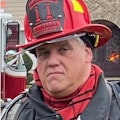
Michael Daley
MICHAEL DALEY, who is a Firehouse contributing editor, recently retired as a 37-year veteran who served as a captain and department training officer in Monroe Township, NJ. He is a staff instructor at multiple New Jersey fire academies and is an adjunct professor in the Fire Science Program at Middlesex County College. Daley is a nationally known instructor who has presented at multiple conferences, including Firehouse Expo and Firehouse World. His education includes accreditations as a Chief Training Officer and a Fire Investigator, and he completed the Craftsman Level of education with Project Kill the Flashover. Daley is a member of the Institution of Fire Engineers and a FEMA Instructor and Rescue Officer with NJ Urban Search and Rescue Task Force 1. He operates Fire Service Performance Concepts, which is a training and research firm that delivers and develops training courses in many fire service competencies.
